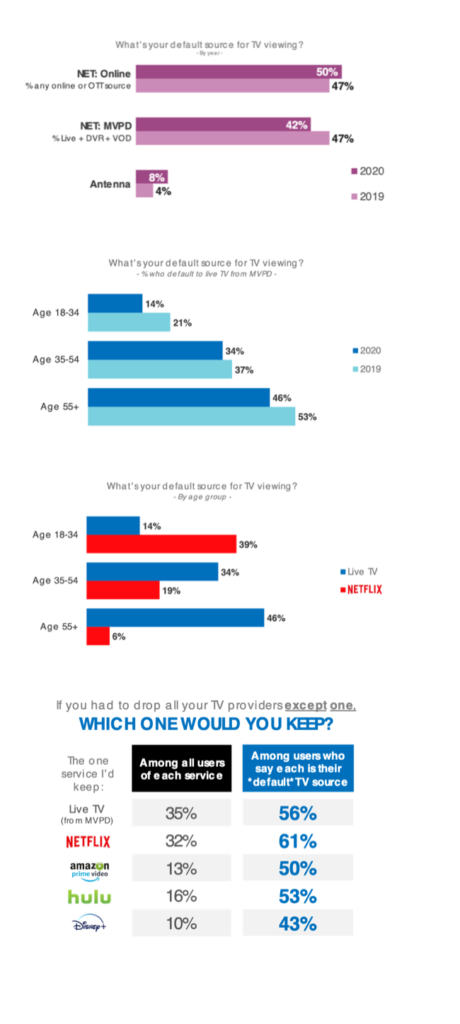What Do You Turn To First? Understanding Viewer 'Home Base' For TV Gives Clearest Picture Yet Of How TV Consumption Is Shifting Online

The number of TV sources each consumer uses is surging: from 3.0 per viewer in 2018, to 3.7 last year, to a whopping 4.8 in April 2020. Driving this increase: a perfect storm of new SVODs (each with buzzworthy “must-see” content), and a pandemic that has left an unprecedented vacuum of free time to fill.
In this environment, what do viewers consider their “home base” for TV? Every year, Hub fields a survey to identify viewers’ *default* sources – the first thing they turn on when they want to watch TV. The data clearly show that the home base for TV is shifting online.
For the first time, more consumers default to watching online. Live TV is still the single most common default choice. But its share continues to drop each year. And in 2020, for the first time the cumulative share of viewers who named any online source as their default exceeded the number who defaulted to one from pay TV (live + DVR + VOD).
This shift will only accelerate in the future because it’s driven mostly by younger viewers: those under 35 are much less engaged with live TV, and much more likely to default to watching online (especially Netflix)
How many people consider a provider their “default” may be a better predictor of success than just how many people are using it. While the number of providers to choose from keeps going up, the disposable time and money consumers have to spend on TV are not. On the contrary: both are contracting as lockdowns are lifted, tens of millions are facing reduced incomes, and free options like Pluto and Tubi continue to gain users. When consumers are forced to cut back, their default providers are far more likely to be the “last man standing”.